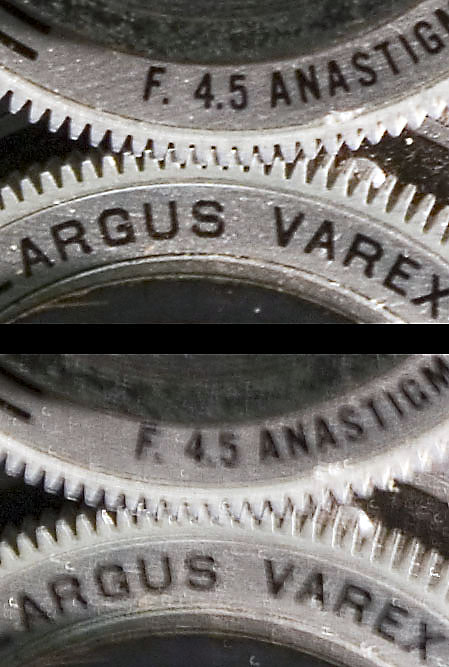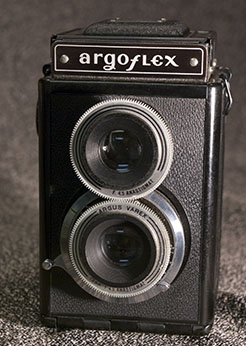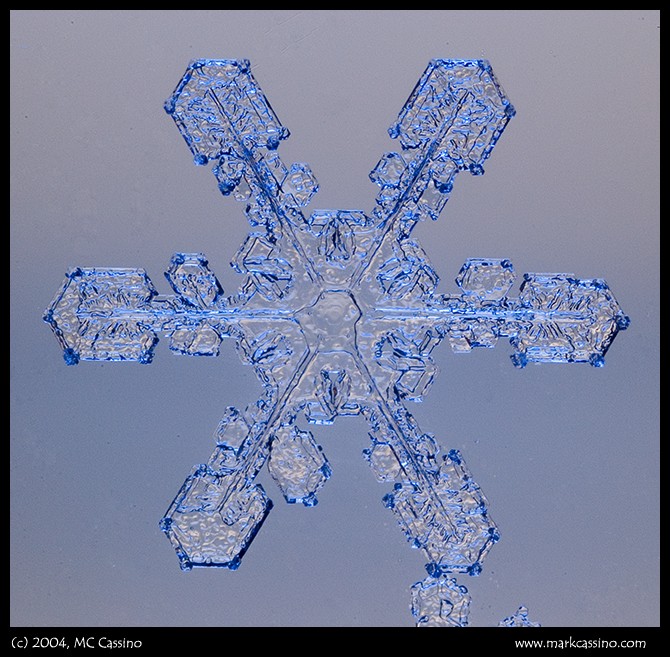Two weeks ago I received a Pentax K10D digital SLR. I had put in my order for this camera with B&H Photo, based on the specifications and trust that Pentax would deliver. After a week of testing and tying the camera, I can only say that I’m more than satisfied. This is not so much of a review of the K10D, as a recording of my subject reactions to it. But then, I guess that’s what most reviews ultimately are!
I bought the camera plus lens kit, which included the Pentax DA 18-55mm lens. Along with the camera and lens, B&H offered a bundle including a SanDisk Extreme III 2-gigabyte SD card.
Here’s a rundown of what I like – and don’t like – about this camera. (The first list is a lot longer than the second.)
On the like list –
1. Image quality: As with the *ist series, this camera offers first rate color, detail, and sharpness. I shoot RAW so I take responsibility for the overall image quality, but I haven’t seen any significant limitations on what this camera is capable of. Noise is low, color accuracy is high, and detail and clarity are first rate.
 2. Build in Anti-Shake: The K10D sports a sensor based anti-shake system. For the last few years I’ve envied the availability of Image Stabilized or Vibration Reduction lenses available for Canon and Nikon systems. With the arrival of the K10D I now have almost two dozen anti-shake enable lenses, ranging from 14mm to 800mm (400 + 2x teleconverter.)
2. Build in Anti-Shake: The K10D sports a sensor based anti-shake system. For the last few years I’ve envied the availability of Image Stabilized or Vibration Reduction lenses available for Canon and Nikon systems. With the arrival of the K10D I now have almost two dozen anti-shake enable lenses, ranging from 14mm to 800mm (400 + 2x teleconverter.)
So how well does the anti-shake work? Here are a couple of test shots of a venerable Argoflex TLR. They were taken hand held at 1/8th of a second using the 18-55mm at 55mm, f8. These are both 'actual pixel' shots of the camera, the top one taken with shake reduction enabled, the bottom one without. As you can see – the anti shake function adds a lot of sharpness!
(A full image of this venerable camera can be found later in this post.)
I’m looking forward to seeing how the Pentax anti-shake feature works with macro photography – with a little luck, next summer will result in a bevy or more / better dragonflies!
3. Speed: This camera is fast! With the Extreme III card you are never more than a few seconds from the next shot, even shooting large RAW DNG files. For JPG shooting the speed is outstanding.
4. 10.2 effective megapixels. This is a noticeable step up from the 6.1 mexapixel *ist-D. At the end of the day, I don’t think this camera will make my medium format gear obsolete for landscape shooting. But as digital specs march forward it’s only a matter of time…
5. Viewfinder: the K10D viewfinder is bright, with a decent level of magnification. The
*ist-D finder was good – better than many other digital SLR’s that I’ve played with – but the 10D takes it another step forward.
 6. Large LCD: Wow! I can read the menus without my glasses. And the detailed zoom really lets me know what’s sharp (or not). Great!
6. Large LCD: Wow! I can read the menus without my glasses. And the detailed zoom really lets me know what’s sharp (or not). Great!
7. DNG RAW files: If you shoot RAW, and you want to make sure that you can access those RAW files in the future, a open standard for RAW shooting makes sense. The Adobe DNG standard isn’t as universal as TIFF or JPG, but it certainly is a step in the right direction away from proprietary RAW formats that may or may not be supported by future software. If you don’t care about this – the proprietary Pentax PEF format is also an option.
8. On demand RAW shooting: I seldom shoot JPG’s, but when I do there is always that shot or two where I wish I could quickly flip over to RAW mode just for a shot or two. The K10D has a nifty RAW button – if you are shooting in Jpeg mode just hit this button and you get an on-off RAW shot (and a JPG to boot.) Nice.
9. Fast AF: Back in the film camera days, Pentax always took a lot of heat over their pokey and low-tech AF systems. The AF on the K10D is exceptionally fast, and works great in low light. The *ist-D was good, this camera is excellent. Pentax has also opened the door to future hypersonic lenses – we’ll see what the future holds.
10. User programmable settings memory: Well, that’s a mouthful. What it amounts to is that this camera lets you decide what gets reset when you turn off the camera, and what settings are retained in memory. The *ist-D used to drive me crazy when shooting macros, because the 2 second mirror pre-fire mode was always reset after the camera powered off. So I’d inevitably take a shot with it off, and then have to reset it. Now I decided whether that – and a slow of other functions like exposure compensation, auto bracketing, white balance, sensitivity, etc go back to default after power on, or stay were they were last set.
11. Show shutter flash synch in aperture priority: Prior Pentax Cameras could only handle slow shutter synch in manual mode – which added an unnecessary step to shooting birds with slow shutters speeds and fill flash. At last – slow shutter synch is selectable for aperture priority. I may just dust off my birding lenses…
12. Full backwards compatibility with K Mount lenses. As with the *ist series, you can use any K mount lens, no matter how old, with the K10D. For Pre-A lenses – really old lenses with no program mode capabilities – you are limited to stop down metering. Pentax has made this fairly painless – just hit a button and the lens stops down and takes a reading. For A and later lenses virtually all functions work, though you do have to input the focal length to get Anti-Shake to work with an older lens.
13. Post Exposure Histogram Display: The K10D offers a host of post exposure information displays. Aside from the standard histogram, you can see the red, green, and blue channel histograms separately. The camera can be set to enable blown out highlights to flash or under exposed shadows to flash.
14. Build Quality / User ergonomics: This is one solid camera. Feels good in the hand, offers a vertical batter grip as well. It continues the Pz-1p and *ist-D dual control wheel design ethic. With hyper-manual and program shift modes, you can set the camera to offer suggested exposure options, and quickly and easily adjust those on the fly. Since most features are selected via switches, buttons, and dials, there is less of the annoying (and time consuming) drilling down into menus.
15. The User setting: One of my favorite settings from the Pz-1p camera, that I’m glad to see back on the K10D. This setting lets you set a favorite user profile, and quickly switch to it with just the twist of the mode dial.
16. The usual Pentax features: In addition to the above, the usual Pentax features are available in this camera. By that I mean the 2 second mirror pre-fire for macro shooting, the DOF preview incorporated in the collar around the shutter button, and the general build quality and ergonomics.
17. Weather sealing: I’m pretty unabashed about using my cameras out in bad weather, and so far I’ve not had any problems. But now at least I have a camera that is actually sealed against the elements. Well – a second camera that’s weather sealed. The Pentax LX had similar sealing.
So those are things I really like. Here are a few things that may or may not be important:
1. The 22 bit color conversion factor: the sensor in this camera records 22 bit per channel data, which is then translated down to 12 bit per channel for final saves (in RAW mode.) This may just be a bit of specmanship – a technical bragging point – but the overall image quality is excellent, so who cares how its achieved.
2. Extended bracketing mode: This feature lets you choose to bracket white balances, sharpness, and contrast levels. Cool – but as a RAW shooter I can’t say I need it.
3. Digital Preview: Basically, with this enabled you compose the shot and press the DOF preview button. The shutter snaps and you see a digital preview of the shot – complete with histograms and flashing high lights / low lights (if selected). Neat – but unless you are really short on memory cards, why not just take the shot and re-shoot if it’s not what you want? The camera is so fast, you won’t need to spend a lot of time waiting for it to write to the card or something.
4. Rechargeable battery: Some review sites have voiced some rather idiotic comments on this subject, suggestion that prior Pentax DSLR’s weren’t serious contenders without rechargeable batteries. I’ve also seen some absurd numbers about battery life using AA batteries (like 80 shos per set of batteries.)
I for one liked using AA batteries in my older Pentax DSLR’s. In the *ist-D a standard set of AA Lithium batteries could produce upwards of 1200 exposures (I routinely logged 1400 –1500 when I tracked it.) They are cheap, they are everywhere, and I’d rather be able to run off to a drugstore and buy new batteries than have to wait to recharge a semi-proprietary battery. So I’m ambivalent to the new rechargeable batteries in the K10D.
That said – I picked up a generic spare battery and will add a couple more to be sure to be able to meet extended shooting needs. (They are supposed to be good for ~700 shots – we’ll see.) I don’t anticipate any problems here – I do think I’d prefer the old AA approach.
5. APS-C Sensor Size: I’ll confess to some ambivalence to this format. I don’t see anything magical (or even very logical) about the 135 format (the 24x35mm film format a.k.a. know as 35mm film). I like how the APS sized sensor adds reach to my telephoto and macro lenses. I also like how the smaller format sensor works with the ‘sweet spot’ in most 35mm lenses – the center portion where sharpness is at it’s peak and distortion is at it’s minimum. But I still love shooting at a wide angle. The 18-55mm kit lens that came with the camera is a step in the right direction, and I may just need to break down and purchase some DA lenses, made to work with the APS sized sensor.
And now the even shorter list – the one thing I don’t like about the K10D:
1. P-TTL Flash (only): As I count it, Pentax has gone through 3 generations of TTL flashes. There were analog TTL flashes, digital flashes, and the newest P-TTL flashes. P-TTL is by far the best for exposure accuracy, and offers extended synch speeds (it will synch at any shutter speed, not matter how fast) but it’s not perfect. At least not for the specialized purposes I use flash for. For one thing – it must be used with a lens that can exchange information with the body. That excludes many older lenses, and also reverse mounted lenses for extreme macro use. The older TTL modes did not have this restriction.
As a result – if I want to take snow crystal shots with this great new camera, I either have to use manual flash or go back to stacking lenses or some other means of gaining extreme magnification.
Oh well – the worse case scenario is that the *ist-D has a permanent job as the official snow crystal camera, and I’ll look at upgrading my current P-TTL flash (the AF360FGZ) to something with more power for general shooting.
Aside from this one nit, I can’t find much to fault in this camera. It’s great to see a small, individualistic company like Pentax come out swinging, and actually hold their own against much larger competitors. It’s particularly heartening to see that they seemed to have listened to feedback from users, and have worked hard to build a camera that is truly responsive to the wants and needs many people have expressed. It’s no wonder that the K10D is wining awards and accolades, and let’s hope it’s a sign of even better things to come from Pentax.
 It’s been snowing here in west Michigan, the steady wave after wave of lake effect snow that comes with the first real blast of arctic air. And so tonight brought the second round of snowflake photography of the winter.
It’s been snowing here in west Michigan, the steady wave after wave of lake effect snow that comes with the first real blast of arctic air. And so tonight brought the second round of snowflake photography of the winter. 




 Winter has pounced on Michigan like a cat landing on an unsuspecting mouse. Where just a week or so ago we were enjoying balmy temperatures in the mid sixties, now waves of lake effect snow are rolling in. The temperatures today didn't get much above 20 F.
Winter has pounced on Michigan like a cat landing on an unsuspecting mouse. Where just a week or so ago we were enjoying balmy temperatures in the mid sixties, now waves of lake effect snow are rolling in. The temperatures today didn't get much above 20 F. And then there is the snow. Today’s snow was (and still is) coming down too hard, too clumped together. The individual crystals that I did try to get had bounced out of larger clumps, and showed the signs of that passage. The air is more humid that it will be later in the season, and the snow crystals that do emerge individually have more effervescence on them, than the crisp clear crystals of mid winter.
And then there is the snow. Today’s snow was (and still is) coming down too hard, too clumped together. The individual crystals that I did try to get had bounced out of larger clumps, and showed the signs of that passage. The air is more humid that it will be later in the season, and the snow crystals that do emerge individually have more effervescence on them, than the crisp clear crystals of mid winter. Well, manual flash is pretty easy to use with a digital body, so I just flipped over to that, adjusted the power settings, and started shooting. The speed of the new camera (its very fast) made it a real pleasure to work with, and the large LCD in back made it easy to assess the quality of shots as they were being taken. And happily, the rechargeable battery seemed to hold up despite the cold and prolonged period of operation.
Well, manual flash is pretty easy to use with a digital body, so I just flipped over to that, adjusted the power settings, and started shooting. The speed of the new camera (its very fast) made it a real pleasure to work with, and the large LCD in back made it easy to assess the quality of shots as they were being taken. And happily, the rechargeable battery seemed to hold up despite the cold and prolonged period of operation.














